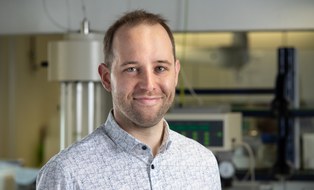DFG-project: Bacterial Exopolysaccharides – Relationship between chemical structure, intrinsic viscosity and technofunctionality
Hydrocolloids are commonly used in various foods to improve texture and stability. The use of lactic acid bacteria, which are able to produce exopolysaccharides (EPS) during fermentation, may significantly contribute to the development of clean-label products with as few additives as possible. The homo- and heteropolysaccharides synthesized by lactic acid bacteria show a high structural heterogeneity, which results in large differences in their macromolecular characteristics and hence, in their intrinsic viscosity and technofunctional properties. In our foregoing projects, we gained knowledge on the reproducible synthesis of sufficient amounts of EPS from different Streptococcus thermophiles strains, on gentle isolation procedures without structural changes, and on the macromolecular and technofunctional properties of the EPS. In addition, the molecular structure of selected EPS was evaluated in cooperation with the Wefers group. However, because of the high structural heterogeneity of EPS from lactic acid bacteria and the multiple factors of influence, less is known about the effects of the molecular structure on the EPS technofunctionality. The aim of this project is to establish unambiguous correlations between single structural attributes (degree of branching, glycosidic linkages, molecular mass) and the intrinsic viscosity as well as the technofunctionality of selected EPS. For this purpose, selected HePS are synthesized in situ in a bioreactor and selected α-glucans are synthesized ex situ by using recombinant enzymes. Variation of synthesis conditions as well as subsequent mechanical and enzymatic modifications yield EPS samples, which differ only in one structural attribute (for example the degree of branching), but not their molecular mass. For a more detailed analysis of the structural properties of the EPS, established modern analytical approaches as well as newly developed fingerprinting methods will be used. The latter are based on the chromatographic analysis of oligosaccharides which are liberated by partial acid hydrolysis or, if possible, by specific enzymes. We expect sound knowledge on the relationship between the molecular structure and the macromolecular and technofunctional properties of EPS, which can be transfered to further EPS.
In cooperation with:
- Prof. Dr. Daniel Wefers, Institut für Chemie - Lebensmittelchemie, Martin-Luther-Universität Halle-Wittenberg
Projektfinanzierung:
- DFG JA2033/3-1 | WE6416/4-1
Project researchers and contact:

Dr.-Ing. Carsten Nachtigall
Biomacromolecules
Send encrypted email via the SecureMail portal (for TUD external users only).
 © Surber
© Surber
PD Dr.nat.techn. et Ing.habil Doris Jaros
Product technologies: Milk; Biomacromolecules
Send encrypted email via the SecureMail portal (for TUD external users only).
 © Tobias Ritz
© Tobias Ritz
Senior Professor Dipl.-Ing. Dr. nat. techn. habil. Harald Rohm
Send encrypted email via the SecureMail portal (for TUD external users only).
